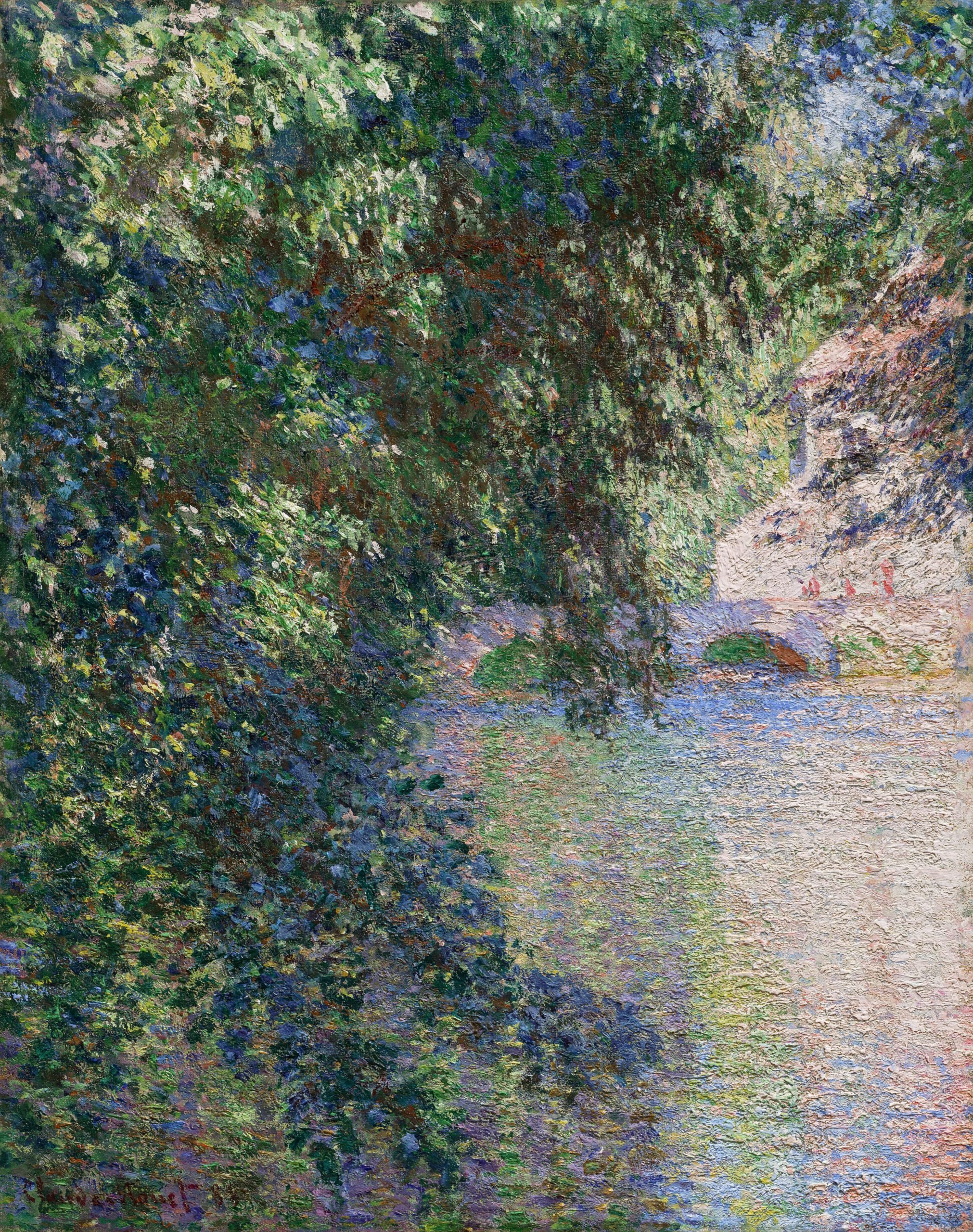
The Nelson-Atkins Museum announced today that Claude Monet’s Moulin de Limetz (1888) will leave its walls for Christie’s 20th Century Evening Sale in New York in May, where it is expected to sell for between $18 million to $25 million. The museum, which only partially owns the work, will put its share of the proceeds towards establishing a new acquisition fund.
The Nelson-Atkins received this riverfront scene from Ethel B. Atha, wife of famed Folgers Coffee salesman Frank P. Atha, in 1986. The trailblazing Impressionist art dealer Paul Durand-Ruel first bought the work from Monet in 1891. It changed hands twice and ended up in the Athas’ possession some 50 years later. Ethel B. Atha donated the painting to the Nelson-Atkins as a partial gift, offering the institution two-thirds ownership while her family retained the final third. Following her death, that share fell to her daughter, Ethelyn Atha Chase, who passed away last September.
Moulin de Limetz marked an early chapter in Monet’s practice of painting in series. Last November, this scene’s sole, nearly identical counterpart was sold at Sotheby’s. The Atha family soon expressed interest in selling theirs. The Nelson-Atkins tried and failed to buy them out, and acquiesced to the work’s sale.
The famed Palmer family were behind last year’s auction of Moulin de Limetz. Sotheby’s estimated it would command $12 million to $18 million, but the work ultimately went for $25.6 million. Over email, Nelson-Atkins’s director and CEO Julián Zugazagoitia told Artnet News it’s uncertain whether that performance inspired the Athas’ decision to sell.
The Nelson-Atkins Museum of Art. Photo courtesy of Visit KC.
“While we will miss this beautiful work, this sale is also an opportunity for the museum to create the Joseph S. and Ethel B. Atha Art Acquisition Endowment,” Zugazagoitia said in today’s release. A spokesperson told Artnet News the museum is still determining what type of art the fund will acquire, though Zugazagoitia told Barrons he hopes it “might identify the Monets of tomorrow.”
Moulin de Limetz is the only scene Monet painted of the grain mill on the River Epte at Limetz, an hour from Giverny. Although the work’s not as famous as Haystacks, painted the same year, the riverfront ode did enjoy renewed excitement when it appeared in “Monet and Chicago” at the Art Institute of Chicago in 2020. The titular mill appears in the distance, obscured by sumptuous leaves. Monet’s masterful portrayal of the water’s surface, however, rendered in rich hues and an impasto finish, is the painting’s greatest triumph.
Viewers have been able to enjoy the work in person since 2008, when the Nelson-Atkins put it on view. Besides Moulin de Limetz, the museum holds numerous other Monets, including the pioneering Impressionist painting Boulevard des Capucines (1873–74) and a work from Monet’s iconic Water Lilies series, created between 1915 and 1926. Today’s announcement also notes that “a local Kansas City collector is now lending Monet’s serene and beautiful Church at Vétheuil, from 1881, ensuring that the artist’s 1880s works will continue to be available for viewers.”